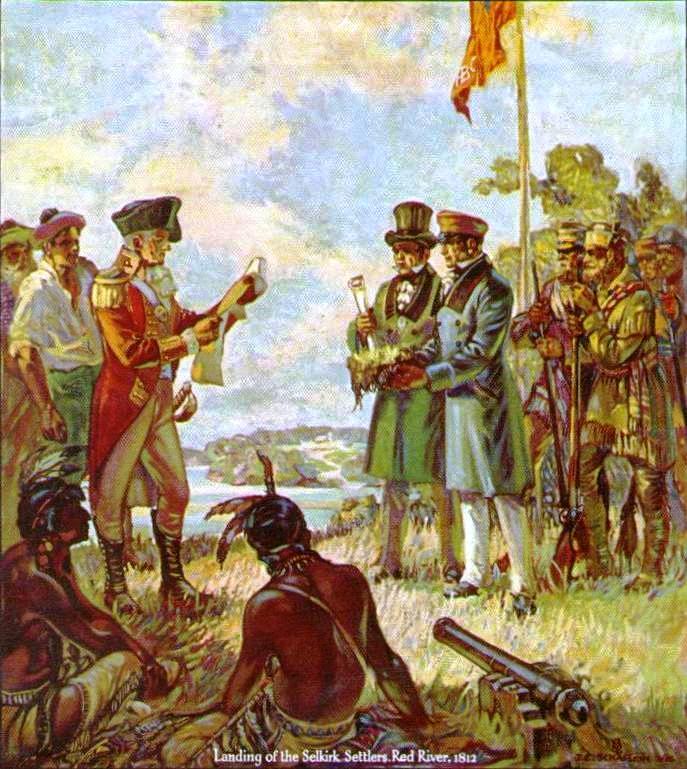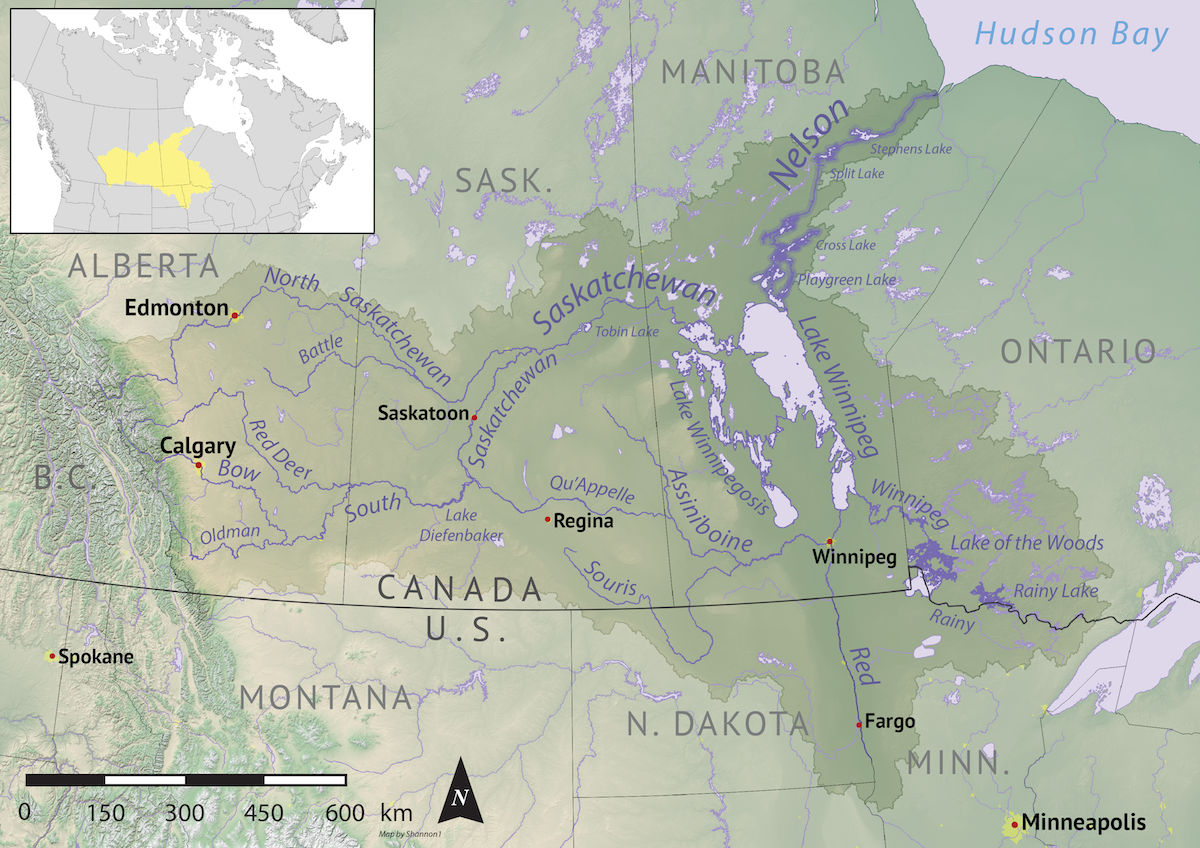|
Sagkeeng First Nation
The Sagkeeng First Nation (also known as Sagkeeng Anicinabe) is a Treaty-1 First Nation in the Eastman Region of Manitoba, Canada, that is composed of the Anishinaabe people indigenous to the area at or near the Fort Alexander Indian Reserve #3 (or Fort Alexander) located along the Winnipeg River and Traverse Bay. Today, Sagkeeng holds territory in the southern part of Lake Winnipeg, north of the city of Winnipeg, and on the mainland. As of June 2021, the Sagkeeng reserve has a total registered population of 8,208 band members, with over 3,600 members living on the reserve and over 4,500 living off of the reserve. As the reserve is located on both North and South shores at the outlet, or 'mouth', of the Winnipeg River, the name ''Sagkeeng'' is derived from the Ojibwe term ''Zaagiing'', meaning 'Mouth of the river'. It is adjacent to the northern border of the Rural Municipality of Alexander, which also borders the town of Pine Falls. Sagkeeng’s traditional territory include ... [...More Info...] [...Related Items...] OR: [Wikipedia] [Google] [Baidu] |
Band Government
In Canada, an Indian band or band (french: bande indienne, link=no), sometimes referred to as a First Nation band (french: bande de la Première Nation, link=no) or simply a First Nation, is the basic unit of government for those peoples subject to the ''Indian Act'' (i.e. status Indians or First Nations). Bands are typically small groups of people: the largest in the country, the Six Nations of the Grand River First Nation had 22,294 members in September 2005, and many have a membership below 100 people. Each First Nation is typically represented by a band council (french: conseil de bande) chaired by an elected chief, and sometimes also a hereditary chief. As of 2013, there were 614 bands in Canada. Membership in a band is controlled in one of two ways: for most bands, membership is obtained by becoming listed on the Indian Register maintained by the government. As of 2013, there were 253 First Nations which had their own membership criteria, so that not all status Indians are ... [...More Info...] [...Related Items...] OR: [Wikipedia] [Google] [Baidu] |
Ojibwe Language
Ojibwe , also known as Ojibwa , Ojibway, Otchipwe,R. R. Bishop Baraga, 1878''A Theoretical and Practical Grammar of the Otchipwe Language''/ref> Ojibwemowin, or Anishinaabemowin, is an indigenous language of North America of the Algonquian language family.Goddard, Ives, 1979.Bloomfield, Leonard, 1958. The language is characterized by a series of dialects that have local names and frequently local writing systems. There is no single dialect that is considered the most prestigious or most prominent, and no standard writing system that covers all dialects. Dialects of Ojibwemowin are spoken in Canada, from southwestern Quebec, through Ontario, Manitoba and parts of Saskatchewan, with outlying communities in Alberta;Nichols, John, 1980, pp. 1–2. and in the United States, from Michigan to Wisconsin and Minnesota, with a number of communities in North Dakota and Montana, as well as groups that removed to Kansas and Oklahoma during the Indian Removal period. While there is some var ... [...More Info...] [...Related Items...] OR: [Wikipedia] [Google] [Baidu] |
Selkirk, Manitoba
Selkirk is a city in the western Canadian province of Manitoba, located on the Red River about northeast of the provincial capital Winnipeg. It has a population of 10,504 as of the 2021 census. The mainstays of the local economy are tourism, a steel mill, and a psychiatric hospital. A vertical lift bridge over the Red River connects Selkirk with the smaller town of East Selkirk. The city is connected to Winnipeg via Highway 9 and is served by the Canadian Pacific Railway. The city was named in honour of Scotsman Thomas Douglas, 5th Earl of Selkirk, who obtained the grant to establish a colony in the Red River area in 1813. History The present-day city is near the centre of the area purchased by the Earl of Selkirk from the Hudson's Bay Company. The first settlers of the Red River Colony arrived in 1813. Although the settlers negotiated a treaty with the Saulteaux Indians of the area, the commercial rivalry between the Hudson's Bay Company and the North West Company gave ri ... [...More Info...] [...Related Items...] OR: [Wikipedia] [Google] [Baidu] |
Fort Maurepas (Canada)
Fort Maurepas was the name of two forts, or one fort in two locations, built by the French in the Lake Winnipeg area in the 1730s. They were both named after Jean-Frédéric Phélypeaux, Count of Maurepas (from the city of Maurepas) who, as Minister of Marine, was in charge of French colonies and chief adviser to King Louis XVI. First Fort Maurepas (Red River): In 1734 two explorers returned from Lake Winnipeg to Fort Saint Charles on Lake of the Woods and reported that they had found a good site for a fort near the mouth of Red River of the North, or Maurepas River as they called it. While returning to Montreal, La Vérendrye sent from Fort Kaministiquia Sieur Cartier, a merchant, with 12 men in 3 canoes to build a fort on the river. When he reached Fort Michilimackinac he ordered La Jemeraye to relieve his son Pierre at Fort Saint Charles so that Pierre assist at the new post. Since his son Jean-Baptiste had returned from the Indians, Jean-Baptiste went instead. The fort was ... [...More Info...] [...Related Items...] OR: [Wikipedia] [Google] [Baidu] |
Fur Trading
The fur trade is a worldwide industry dealing in the acquisition and sale of animal fur. Since the establishment of a world fur market in the early modern period, furs of boreal, polar and cold temperate mammalian animals have been the most valued. Historically the trade stimulated the exploration and colonization of Siberia, northern North America, and the South Shetland and South Sandwich Islands. Today the importance of the fur trade has diminished; it is based on pelts produced at fur farms and regulated fur-bearer trapping, but has become controversial. Animal rights organizations oppose the fur trade, citing that animals are brutally killed and sometimes skinned alive. Fur has been replaced in some clothing by synthetic imitations, for example, as in ruffs on hoods of parkas. Continental fur trade Russian fur trade Before the European colonization of the Americas, Russia was a major supplier of fur pelts to Western Europe and parts of Asia. Its trade developed in t ... [...More Info...] [...Related Items...] OR: [Wikipedia] [Google] [Baidu] |
Pierre Gaultier De Varennes, Sieur De La Vérendrye
Pierre Gaultier de Varennes, sieur de La Vérendrye (17 November 1685 – 5 December 1749) was a French Canadian military officer, fur trader, and explorer. In the 1730s, he and his four sons explored the area west of Lake Superior and established trading posts there. They were part of a process that added Western Canada to the original New France territory that was centred along the Saint Lawrence basin. He was the first known European to reach present-day North Dakota and the upper Missouri River in the United States. In the 1740s, two of his sons crossed the prairie as far as present-day Wyoming, United States and were the first Europeans to see the Rocky Mountains north of New Mexico. Early life Born in Trois-Rivières, New France, Pierre was the eldest son of René Gaultier de Varennes, who came to Canada as a soldier in 1665, and Marie, the daughter of Pierre Boucher, the first Governor of Trois-Rivières. The Gaultier family were minor nobility or landowners ... [...More Info...] [...Related Items...] OR: [Wikipedia] [Google] [Baidu] |
Time Immemorial
Time immemorial ( la, Ab immemorabili) is a phrase meaning time extending beyond the reach of memory, record, or tradition, indefinitely ancient, "ancient beyond memory or record". The phrase is used in legally significant contexts as well as in common parlance. In law In law, time immemorial denotes "a period of time beyond which legal memory cannot go," and "time out of mind." Most frequently, the phrase "time immemorial" appears as a legal term of art in judicial discussion of common law development and, in the United States, the property rights of Native Americans. English and American Common Law "Time immemorial" is frequently used to describe the time required for a custom to mature into common law.Kunal M. Parker"Law "In" and "As" History: The Common Law in the American Polity, 1790-1900" 1 UC Irvine L. Rev. 587, 594-600 (2011). Common law is a body of law identified by judges in judicial proceedings, rather than created by the legislature.James Apple,A Primer on ... [...More Info...] [...Related Items...] OR: [Wikipedia] [Google] [Baidu] |
Sault Ste
Sault may refer to: Places in Europe * Sault, Vaucluse, France * Saint-Benoît-du-Sault, France * Canton of Sault, France * Canton of Saint-Benoît-du-Sault, France * Sault-Brénaz, France * Sault-de-Navailles, France * Sault-lès-Rethel, France * Sault-Saint-Remy, France Places in North America * Sault Ste. Marie, a cross-border region in Canada and the United States ** Sault Ste. Marie, Ontario, Canada ** Sault Ste. Marie, Michigan, United States * Sault College, Ontario, Canada * Sault Ste. Marie Canal, a National Historic Site of Canada in Sault Ste. Marie, Ontario * Sault Locks or Soo Locks, a set of parallel locks which enable ships to travel between Lake Superior and the lower Great Lakes operated and maintained by the United States Army Corps of Engineers * Long Sault, a rapid in the St. Lawrence River * Long Sault, Ontario, Canada * Sault-au-Récollet, Montreal, Quebec, Canada * Grand Sault or Grand Falls, New Brunswick, Canada People with the surname * Ray Sault (born ... [...More Info...] [...Related Items...] OR: [Wikipedia] [Google] [Baidu] |
Copper Mine
Copper extraction refers to the methods used to obtain copper from its ores. The conversion of copper consists of a series of physical and electrochemical processes. Methods have evolved and vary with country depending on the ore source, local environmental regulations, and other factors. As in all mining operations, the ore must usually be beneficiated (concentrated). The processing techniques depend on the nature of the ore. If the ore is primarily sulfide copper minerals (such as chalcopyrite), the ore is crushed and ground to liberate the valuable minerals from the waste ('gangue') minerals. It is then concentrated using mineral flotation. The concentrate is typically sold to distant smelters, although some large mines have smelters located nearby. Such colocation of mines and smelters was more typical in the 19th and early 20th centuries, when smaller smelters could be economic. The sulfide concentrates are typically smelted in such furnaces as the Outokumpu or Inco f ... [...More Info...] [...Related Items...] OR: [Wikipedia] [Google] [Baidu] |
Lake Superior
Lake Superior in central North America is the largest freshwater lake in the world by surface areaThe Caspian Sea is the largest lake, but is saline, not freshwater. and the third-largest by volume, holding 10% of the world's surface fresh water. The northern and westernmost of the Great Lakes of North America, it straddles the Canada–United States border with the province of Ontario to the north and east, and the states of Minnesota to the northwest and Wisconsin and Michigan to the south. It drains into Lake Huron via St. Marys River, then through the lower Great Lakes to the St. Lawrence River and the Atlantic Ocean. Name The Ojibwe name for the lake is ''gichi-gami'' (in syllabics: , pronounced ''gitchi-gami'' or ''kitchi-gami'' in different dialects), meaning "great sea". Henry Wadsworth Longfellow wrote this name as "Gitche Gumee" in the poem ''The Song of Hiawatha'', as did Gordon Lightfoot in his song " The Wreck of the ''Edmund Fitzgerald''". According to oth ... [...More Info...] [...Related Items...] OR: [Wikipedia] [Google] [Baidu] |
Crown–Indigenous Relations And Northern Affairs Canada
Crown''–''Indigenous Relations and Northern Affairs Canada (CIRNAC; french: Relations Couronne-Autochtones et des Affaires du Nord Canada)''Crown–Indigenous Relations and Northern Affairs Canada'' is the applied title under the Federal Identity Program; the legal title is Department of Crown''–''Indigenous Relations and Northern Affairs (). is the department of the Government of Canada responsible for Canada's northern lands and territories, and one of two departments with responsibility for policies relating to Indigenous peoples in Canada (the other being the Department of Indigenous Services). The department is overseen by two cabinet ministers, the minister of Crown–Indigenous relations (whose portfolio includes treaty rights and land negotiations) and the minister of northern affairs. Its headquarters is in Terrasses de la Chaudière, in downtown Gatineau, Quebec. Restructuring of the Department of Indian Affairs and Northern Development In August 2017, the Tr ... [...More Info...] [...Related Items...] OR: [Wikipedia] [Google] [Baidu] |
Hudson's Bay Company
The Hudson's Bay Company (HBC; french: Compagnie de la Baie d'Hudson) is a Canadian retail business group. A fur trading business for much of its existence, HBC now owns and operates retail stores in Canada. The company's namesake business division is Hudson's Bay, commonly referred to as The Bay ( in French). After incorporation by English royal charter in 1670, the company functioned as the ''de facto'' government in parts of North America for nearly 200 years until the HBC sold the land it owned (the entire Hudson Bay drainage basin, known as Rupert's Land) to Canada in 1869 as part of the Deed of Surrender, authorized by the Rupert's Land Act 1868. At its peak, the company controlled the fur trade throughout much of the English- and later British-controlled North America. By the mid-19th century, the company evolved into a mercantile business selling a wide variety of products from furs to fine homeware in a small number of sales shops (as opposed to trading posts) acros ... [...More Info...] [...Related Items...] OR: [Wikipedia] [Google] [Baidu] |






